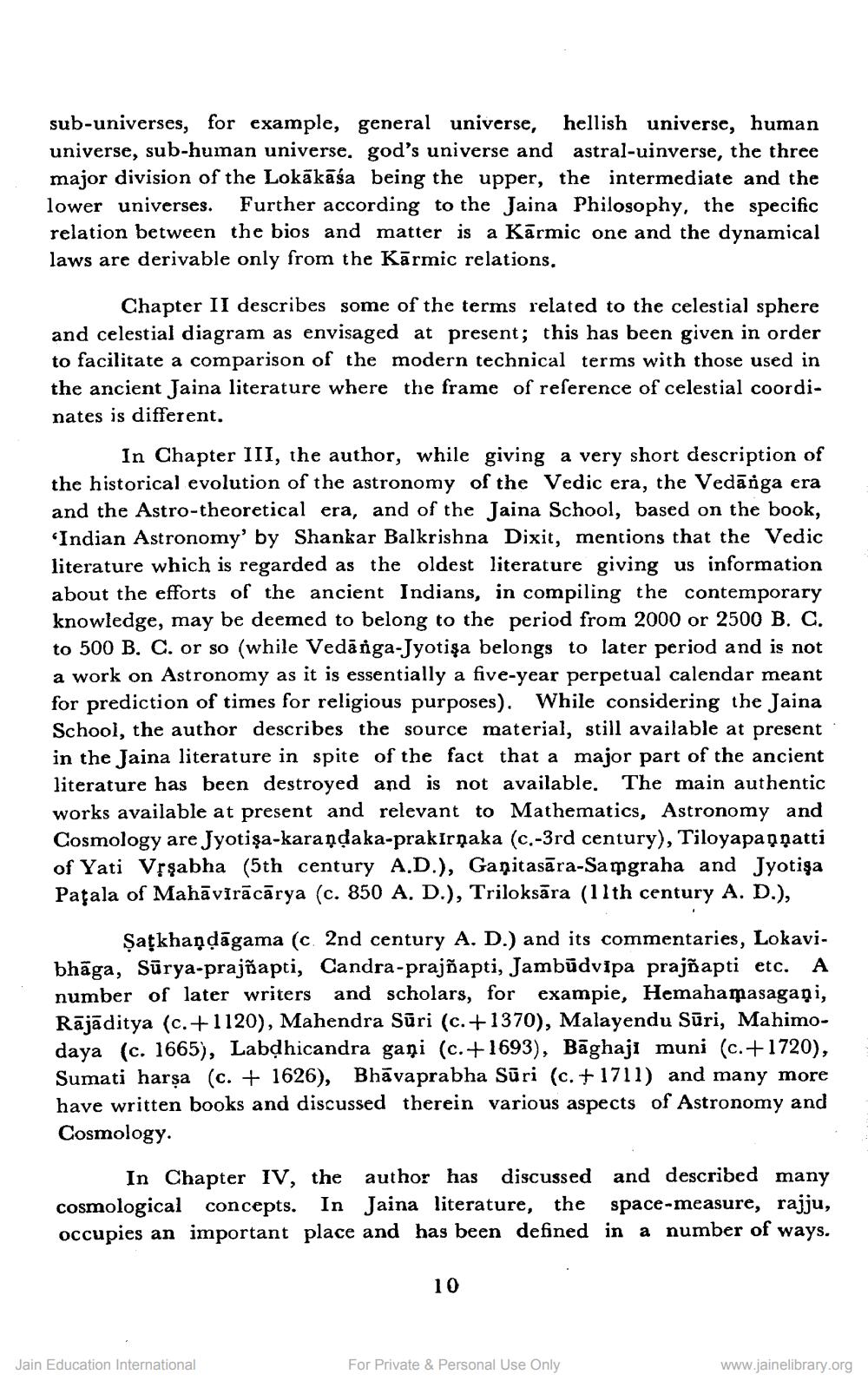________________
sub-universes, for example, general universe, hellish universe, human universe, sub-human universe. god's universe and astral-uinverse, the three major division of the Lokākāśa being the upper, the intermediate and the lower universes. Further according to the Jaina Philosophy, the specific relation between the bios and matter is a Karmic one and the dynamical laws are derivable only from the Kārmic relations.
Chapter II describes some of the terms related to the celestial sphere and celestial diagram as envisaged at present; this has been given in order to facilitate a comparison of the modern technical terms with those used in the ancient Jaina literature where the frame of reference of celestial coordinates is different.
In Chapter III, the author, while giving a very short description of the historical evolution of the astronomy of the Vedic era, the Vedānga era and the Astro-theoretical era, and of the Jaina School, based on the book,
Indian Astronomy' by Shankar Balkrishna Dixit, mentions that the Vedic literature which is regarded as the oldest literature giving us information about the efforts of the ancient Indians, in compiling the contemporary knowledge, may be deemed to belong to the period from 2000 or 2500 B. C. to 500 B. C. or so (while Vedārga-Jyotişa belongs to later period and is not a work on Astronomy as it is essentially a five-year perpetual calendar meant for prediction of times for religious purposes). While considering the Jaina School, the author describes the source material, still available at present in the Jaina literature in spite of the fact that a major part of the ancient literature has been destroyed and is not available. The main authentic works available at present and relevant to Mathematics, Astronomy and Cosmology are Jyotişa-karaņdaka-prakirņaka (c.-3rd century), Tiloyapannatti of Yati Vrşabha (5th century A.D.), Gasitasāra-Samgraha and Jyotiga Patala of Mahāvīrācārya (c. 850 A. D.), Triloksāra (18th century A. D.),
Şatkhaņdāgama (c. 2nd century A. D.) and its commentaries, Lokavibhāga, Sūrya-prajñapti, Candra-prajñapti, Jambūdvipa prajñapti etc. A number of later writers and scholars, for exampie, Hemahamasagani, Rājāditya (c.+1120), Mahendra Sūri (c.+1370), Malayendu Sūri, Mahimodaya (c. 1665), Labdhicandra gani (c. + 1693), Bāghaji muni (c.+ 1720), Sumati harşa (c. + 1626), Bhāvaprabha Sūri (c. + 1711) and many more have written books and discussed therein various aspects of Astronomy and Cosmology.
In Chapter IV, the author has discussed and described many cosmological concepts. In Jaina literature, the space-measure, rajju, occupies an important place and has been defined in a number of ways.
10
Jain Education International
For Private & Personal Use Only
www.jainelibrary.org




